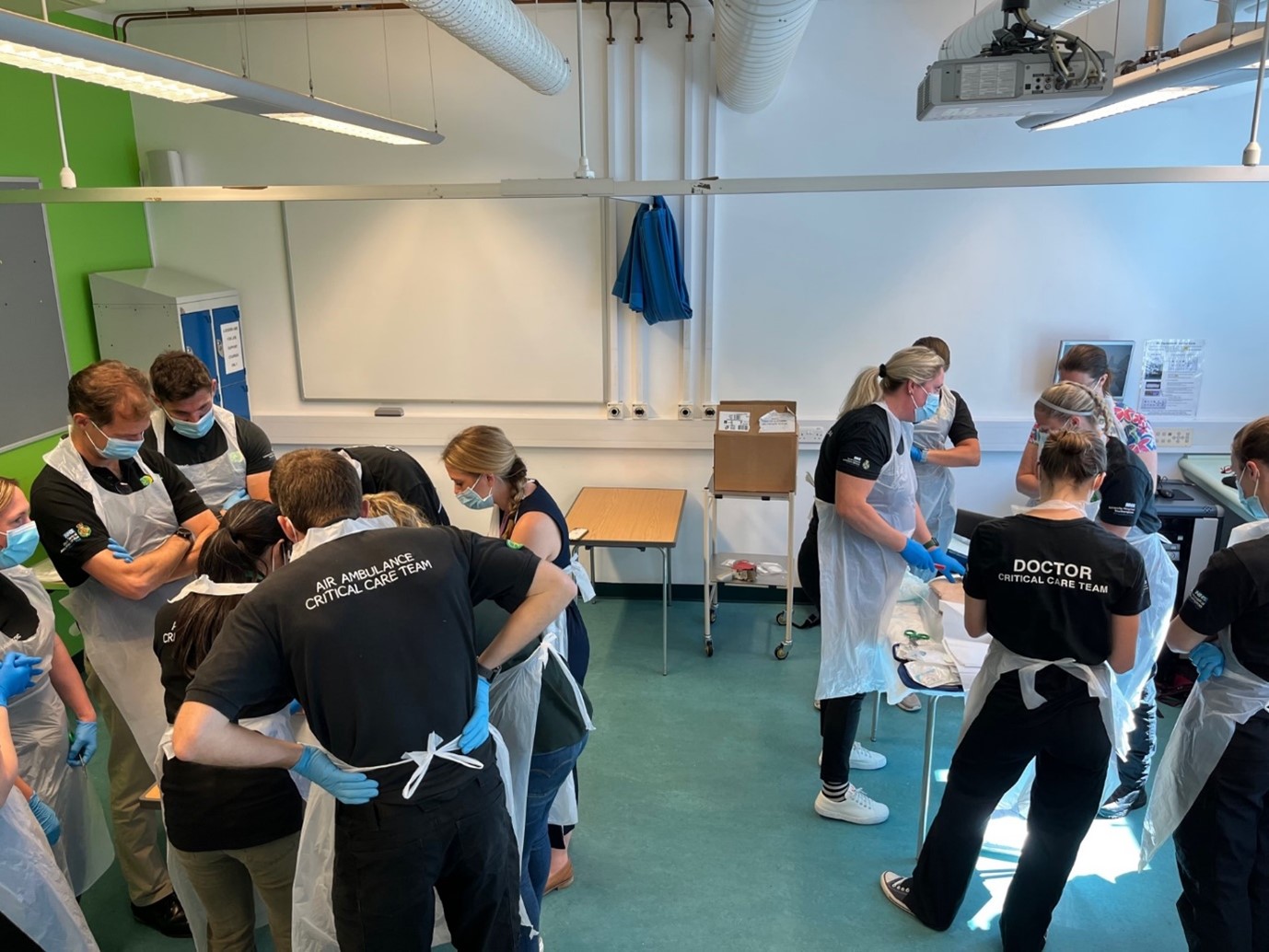Every year we respond to hundreds of trauma patients in our region. To give these patients the very best chance of survival and recovery, our crew need to stay at the top of their game by undertaking rigorous and intense training sessions.
Our Specialist Paramedic Lead for Education, Mike Funge explains how a recent surgical skills training session gives our crew the skills and confidence to perform life-saving procedures when they are needed most.
“Some of the patients that we see require emergency surgical intervention, such as a thoracostomy, tracheotomy or an amputation. These procedures can be for several reasons, but we must be prepared and understand how to undertake complex fine motor tasks in extreme and uncontrolled environments.

“Surgical skills training focuses on practicing these interventions on realistic manikins and models. It gives us the opportunity to walk and talk through a variety of surgical interventions and, furthermore, allows us to develop in an environment that is conducive to learning and development.
“By practicing these methods regularly, we can maintain confidence in our skills and assessment techniques, something that is of undoubted benefit to the patients requiring these interventions.”
Collaboration
“This session was well supported by our colleagues within University Hospital Southampton: members of the surgical, obstetric and midwifery teams, as well as the hospital simulation team.
“Collaborative training increases learning and understanding and allows us to understand how the patient journey will continue when in the hospital.
“In turn, we can highlight some of the complexities and difficulties of pre-hospital working to teams that would not usually encounter this – a valuable experience for all involved in the delivery of specific critical care.”
- Thoracostomy: when a tube is inserted into the chest cavity to remove air or fluid that has accumulated in the space between the lung and the chest wall.
- Tracheotomy: an opening created at the front of the neck so a tube can be inserted into the windpipe (trachea) to help you breathe.
- Amputation: the surgical removal of part of the body, such as an arm or leg.









